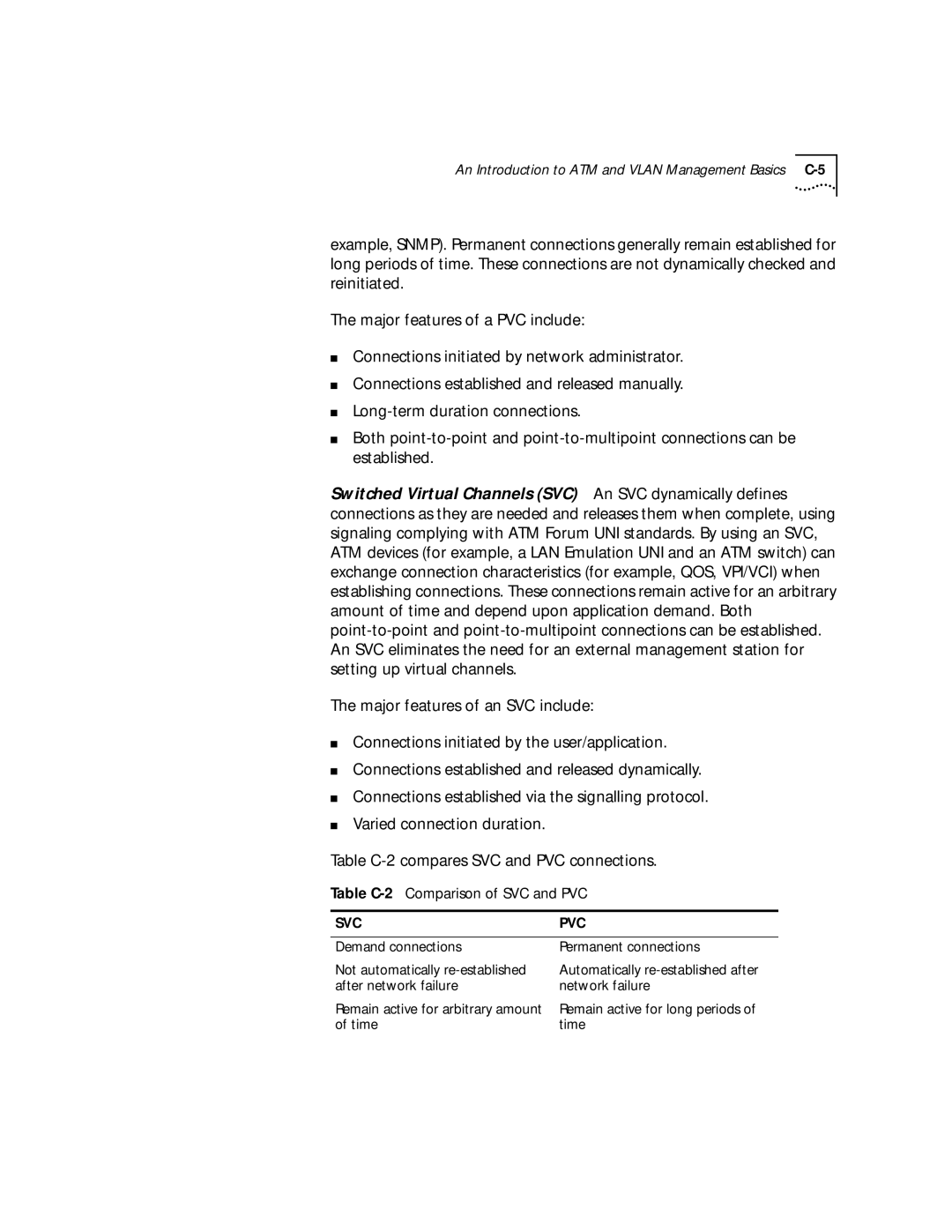
An Introduction to ATM and VLAN Management Basics
example, SNMP). Permanent connections generally remain established for long periods of time. These connections are not dynamically checked and reinitiated.
The major features of a PVC include:
■Connections initiated by network administrator.
■Connections established and released manually.
■
■Both
Switched Virtual Channels (SVC) An SVC dynamically defines connections as they are needed and releases them when complete, using signaling complying with ATM Forum UNI standards. By using an SVC, ATM devices (for example, a LAN Emulation UNI and an ATM switch) can exchange connection characteristics (for example, QOS, VPI/VCI) when establishing connections. These connections remain active for an arbitrary amount of time and depend upon application demand. Both
The major features of an SVC include:
■Connections initiated by the user/application.
■Connections established and released dynamically.
■Connections established via the signalling protocol.
■Varied connection duration.
Table
Table C-2 Comparison of SVC and PVC
SVC | PVC |
|
|
Demand connections | Permanent connections |
Not automatically | Automatically |
after network failure | network failure |
Remain active for arbitrary amount | Remain active for long periods of |
of time | time |
